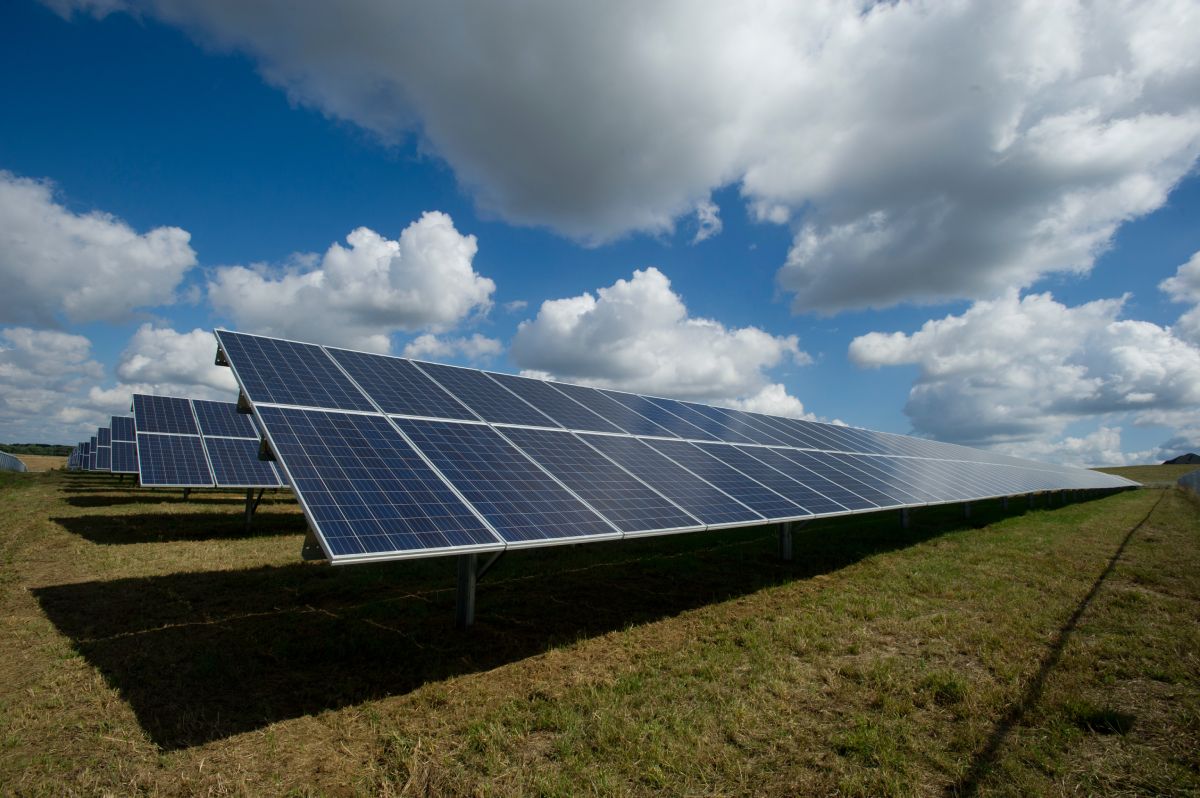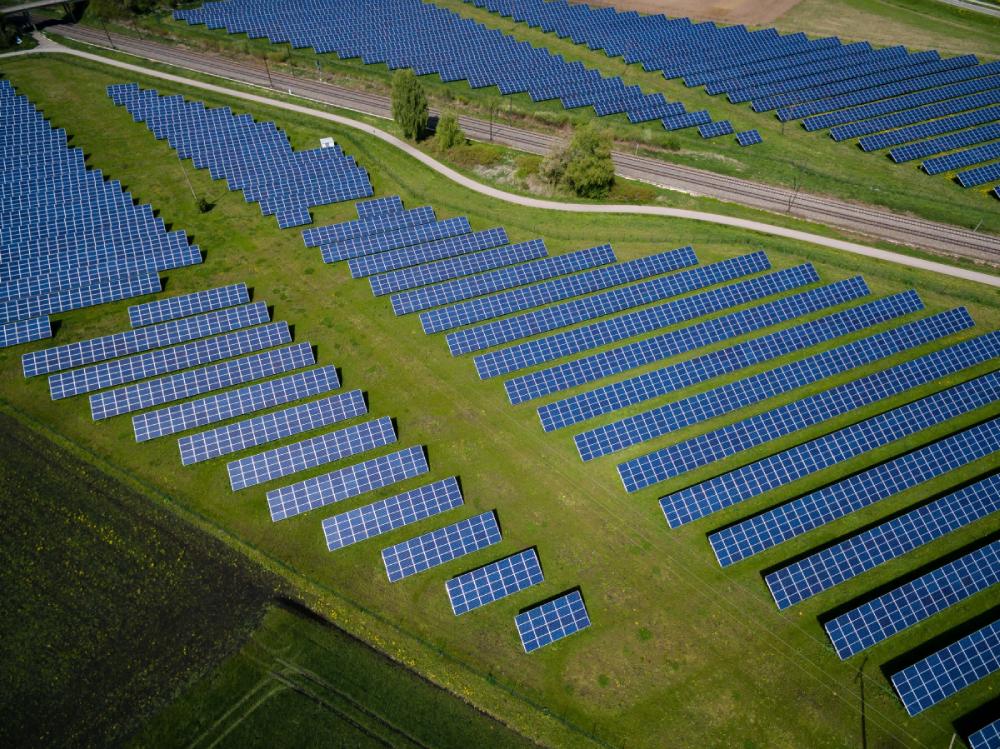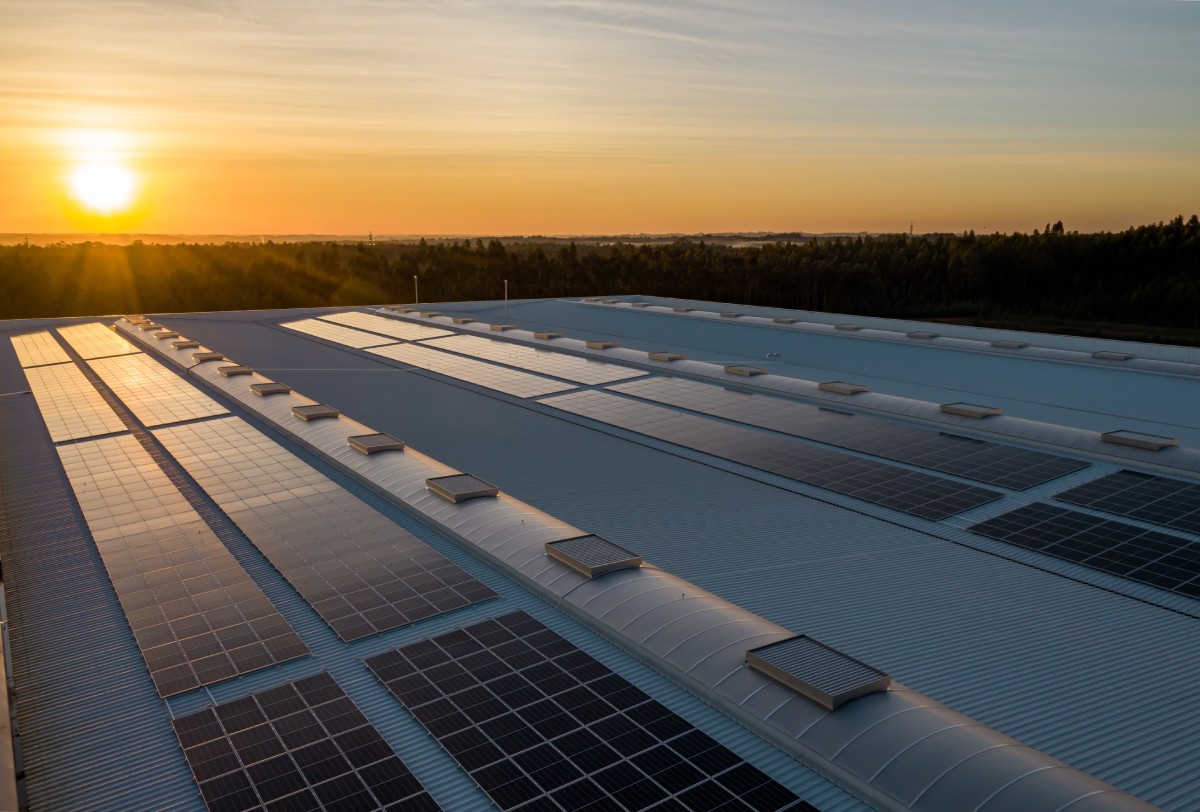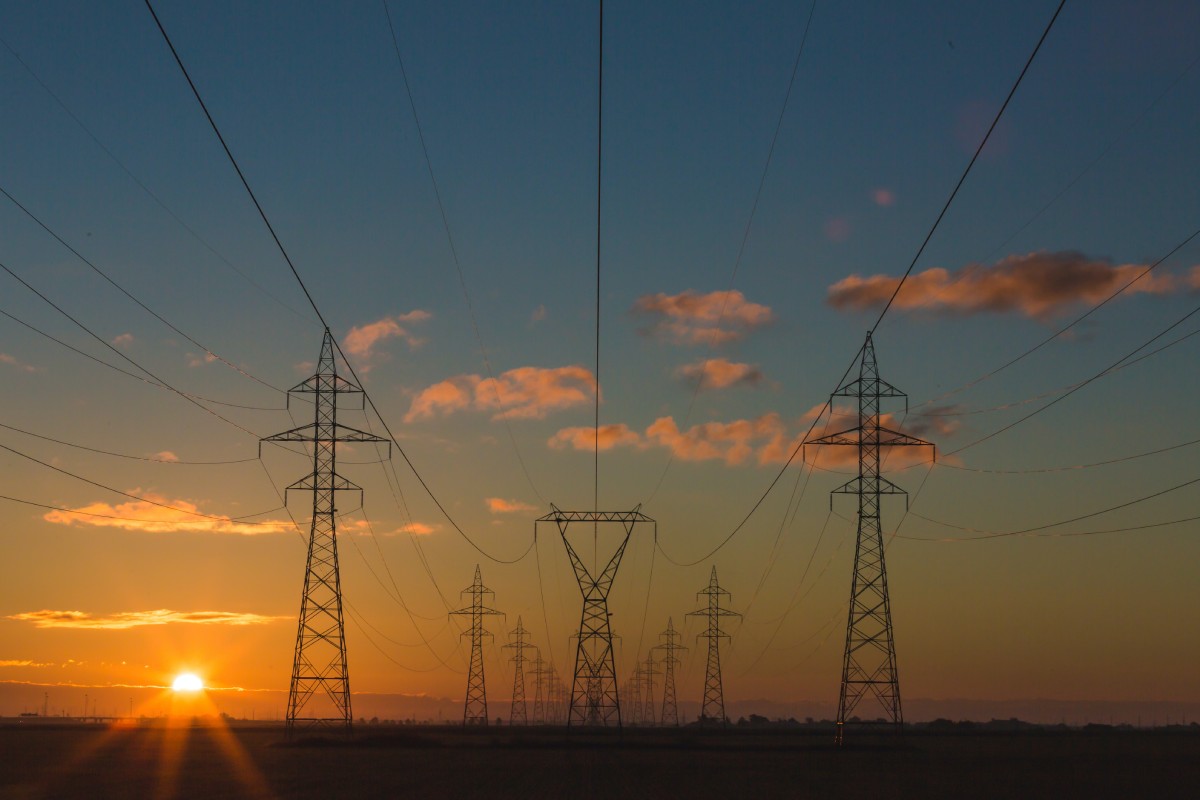Introduction
Poverty is a pressing global issue affecting millions of people worldwide. It manifests in various forms, including limited access to necessities, inadequate healthcare, lack of education, and restricted economic opportunities. The consequences of poverty are far-reaching and impact communities at large. However, renewable energy presents a transformative solution to address poverty while promoting sustainable development.
Understanding the Global Issue of Poverty
Poverty is not merely the absence of financial resources; it encompasses a complex set of interrelated challenges. It deprives individuals and communities of their essential needs and opportunities for advancement, trapping them in a cycle of vulnerability. Poverty affects all aspects of life, from health and education to employment and overall well-being.
Introducing Renewable Energy and Its Potential
Renewable energy refers to energy derived from natural resources that are constantly replenished, such as sunlight, wind, water, and geothermal heat. Unlike fossil fuels, renewable energy sources are sustainable and do not deplete the Earth’s finite resources. They offer immense potential for poverty alleviation by providing clean, affordable, and reliable power to communities in need.
Renewable energy technologies have evolved significantly in recent years, becoming more efficient and cost-effective. This progress has opened up opportunities to harness renewable energy for poverty alleviation, particularly in regions with limited access to conventional energy sources. By embracing renewable energy, communities can break free from energy poverty and unlock many socio-economic benefits.
Thesis Statement: The Significance of Renewable Energy in Addressing Poverty
This blog post aims to highlight the vital role of renewable energy in combating poverty. By providing a sustainable and accessible energy solution, renewable energy has the potential to uplift communities, improve livelihoods, and foster inclusive development. Through case studies, examples, and analysis, we will delve into the ways renewable energy initiatives have contributed to poverty alleviation, and the opportunities and challenges associated with their implementation.
Renewable energy offers both environmental advantages and social and economic benefits that are crucial for poverty-stricken areas. By recognizing the immense potential of renewable energy and promoting its adoption, we can create a world where clean energy access catalyzes positive change, enabling individuals and communities to break free from the constraints of poverty.
In the subsequent sections of this blog post, we will explore the various dimensions of renewable energy’s impact on poverty alleviation. We will discuss the transformative power of renewable energy solutions, their ability to empower local communities, the importance of supportive policies and financial mechanisms, and the success stories that highlight the real-world impact of renewable energy in uplifting impoverished regions. Together, let us delve into renewable energy and its profound potential to alleviate poverty and foster a more sustainable and equitable future.
The Link between Energy Access and Poverty
Lack of energy access is closely intertwined with poverty, creating a cycle of deprivation and limited community opportunities. In this section, we will explore the connection between energy access and poverty, discuss the challenges faced by communities without reliable energy sources, and emphasize the crucial role of renewable energy in providing sustainable and affordable power.

Exploring the Connection between Lack of Energy Access and Poverty
Energy access plays a pivotal role in poverty alleviation and sustainable development. It is a fundamental requirement for meeting basic human needs, improving health and education outcomes, and fostering economic growth. Unfortunately, many communities lack access to reliable energy services, particularly in developing regions.
Inadequate energy access hinders progress in various aspects of life. Without electricity, households rely on traditional and inefficient sources for cooking, such as biomass and kerosene, leading to indoor air pollution and health risks. Lack of lighting affects educational opportunities, making it challenging for students to study during evening hours. Moreover, healthcare facilities need access to electricity to provide quality services, compromising the well-being of communities.
Discussing the Challenges Faced by Communities without Reliable Energy Sources
Communities without reliable energy sources face numerous challenges that perpetuate the cycle of poverty. Dependence on fossil fuel-based energy, such as diesel generators, comes with high costs, making energy unaffordable for many households. Fluctuating fuel prices can strain already limited financial resources, diverting funds from essential needs.
Additionally, reliance on traditional energy sources like biomass for cooking and heating presents health risks, especially for women and children who spend considerable time close to the cooking area. The harmful fumes released during combustion contribute to respiratory illnesses and other health complications, further burdening vulnerable communities.
The lack of energy access also hampers economic opportunities. Productive sectors such as agriculture, small-scale enterprises and manufacturing require reliable energy to function efficiently. Access to electricity is necessary for communities to engage in income-generating activities, hindering economic growth and perpetuating poverty.
Emphasizing the Role of Renewable Energy in Providing Sustainable and Affordable Power
Renewable energy holds immense potential in addressing the energy needs of impoverished communities sustainably and affordably. Compared to conventional energy sources, renewable energy is derived from abundant natural resources that do not deplete over time. Solar, wind, hydro, and biomass energy sources offer reliable and sustainable alternatives to fossil fuels.
Renewable energy systems can be implemented at various scales, from small-scale off-grid solutions to large-scale grid-connected projects. This versatility allows for tailored approaches that fit different communities’ specific energy requirements and conditions. Decentralized renewable energy systems can be established for remote and underserved areas, providing reliable power for households, schools, and healthcare facilities.
Furthermore, renewable energy technologies have become increasingly cost-effective, making them more accessible to communities with limited financial resources. The declining costs of solar panels, wind turbines, and energy storage systems have contributed to the affordability of renewable energy solutions. Innovative financing models, such as community-based initiatives and microfinance schemes, have also emerged, enabling communities to invest in renewable energy projects and reap the benefits of clean and sustainable power.
In conclusion, the link between energy access and poverty is undeniable. The lack of reliable energy sources creates significant barriers to socioeconomic development and perpetuates the cycle of poverty. However, renewable energy offers a viable and sustainable solution. By providing communities with access to affordable and clean power, renewable energy can empower individuals, improve living conditions, and foster economic opportunities, ultimately contributing to poverty alleviation and a more equitable future.
Renewable Energy Solutions for Poverty Alleviation
Renewable energy solutions have emerged as powerful tools in the fight against poverty, offering sustainable and accessible power to impoverished communities. In this section, we will provide an overview of different renewable energy sources, highlight successful examples of renewable energy projects implemented in poor regions, and discuss the positive impact of renewable energy on income generation, education, healthcare, and other aspects of poverty.

Overview of Different Renewable Energy Sources and Their Benefits
-
Solar Energy: Solar power harnesses the sun’s energy through photovoltaic panels or concentrated solar power systems. It offers numerous benefits, including abundant availability, scalability, and versatility. Solar energy can be utilized for electricity generation, heating, and lighting, providing clean and affordable energy to remote and off-grid areas.
-
Wind Energy: Wind turbines convert the wind’s kinetic energy into electricity. Wind power is a mature and rapidly expanding renewable energy source. It is particularly beneficial in windy, coastal, and high-altitude regions. Wind energy projects can range from small-scale installations to large wind farms, contributing to decentralized and sustainable energy generation.
-
Hydropower: Hydropower harnesses the energy of flowing or falling water to generate electricity. It is a well-established renewable energy source with significant potential for poverty alleviation. Small-scale hydro projects can provide electricity to rural communities, powering productive activities and improving living standards.
-
Biomass Energy: Biomass refers to organic materials such as crop residues, wood, and animal waste, which can be used as fuel for cooking, heating, and electricity generation. Biomass energy is particularly relevant in areas with abundant agricultural or forestry resources. It offers an environmentally friendly alternative to traditional biomass fuels, reducing indoor air pollution and health risks.
Highlighting Successful Examples of Renewable Energy Projects in Impoverished Regions
Numerous successful renewable energy projects have been implemented in impoverished regions, demonstrating the transformative potential of clean energy solutions. For example:
-
Solar Home Systems in Bangladesh: The Grameen Shakti program in Bangladesh has successfully installed solar home systems in rural areas, providing electricity access to millions of households. This initiative has empowered communities by enabling small businesses, extending student study hours, and improving healthcare services.
-
Off-Grid Solar Mini-Grids in Kenya: In Kenya, the M-KOPA Solar initiative has deployed off-grid solar mini-grids, offering affordable and reliable electricity to remote villages. This has increased economic activities, improved education outcomes, and enhanced access to modern communication technologies.
-
Micro-Hydro Power in Nepal: Nepal has embraced micro-hydro power systems, particularly in mountainous regions. These small-scale projects have electrified remote communities, reducing reliance on traditional fuels and creating opportunities for income generation, such as agro-processing and small-scale enterprises.
Positive Impact of Renewable Energy on Poverty Alleviation
Renewable energy solutions have a wide-ranging positive impact on poverty alleviation:
-
Income Generation: Access to renewable energy enables communities to engage in income-generating activities, such as small-scale agriculture, agro-processing, and cottage industries. A reliable power supply facilitates productivity, value addition, and market access, leading to increased incomes and improved livelihoods.
-
Education: Renewable energy helps bridge the energy gap in education. Schools equipped with solar panels or wind turbines can provide lighting and power for computers, enabling students to study and access digital resources. This enhances educational opportunities and improves academic performance.
-
Healthcare: Renewable energy ensures reliable electricity supply to healthcare facilities, allowing for the operation of medical equipment, refrigeration of vaccines, and lighting during emergencies. It enhances the quality of healthcare services, reduces maternal and child mortality rates, and supports the delivery of critical medical care.
-
Clean Cooking: Renewable energy solutions for cooking, such as improved cookstoves fueled by biomass or biogas, promote clean and efficient cooking practices. This reduces indoor air pollution, mitigates health risks, and enhances the well-being of households, particularly women and children.
Renewable energy catalyzes positive change, breaking the cycle of poverty and empowering communities. By embracing these sustainable solutions, we can create a future where reliable and clean energy access is not a privilege but a universal right, driving social, economic, and environmental progress.
Empowering Local Communities through Renewable Energy
Renewable energy provides access to clean and sustainable power. It empowers local communities to become self-reliant in their energy needs. In this section, we will examine the role of renewable energy in empowering communities, discuss community-based initiatives, and highlight the importance of capacity building and skills development for sustainable energy solutions.

The Role of Renewable Energy in Empowering Local Communities
Renewable energy offers opportunities for communities to take control of their energy production and consumption, leading to increased self-reliance and economic empowerment. Here are some ways renewable energy empowers local communities:
-
Energy Independence: By generating their energy from renewable sources, communities can reduce their dependence on centralized power grids. This empowers them to meet their energy needs independently without being vulnerable to grid energy price fluctuations or disruptions.
-
Income Generation: Local communities can engage in income-generating activities related to renewable energy. For example, they can establish community-owned renewable energy projects, such as solar or wind farms, and sell excess electricity to the grid. This creates new job opportunities, stimulates local economies, and generates income for community development projects.
-
Ownership and Governance: Community-based renewable energy initiatives provide opportunities for local ownership and governance. When communities have a stake in renewable energy projects, they can actively participate in decision-making processes, ensuring that projects align with their needs, values, and long-term sustainability goals.
Community-Based Renewable Energy Initiatives and Poverty Reduction
Community-based renewable energy initiatives are vital in poverty reduction and community development. These initiatives involve active participation and collaboration among community members, local organizations, and relevant stakeholders. Here are some examples of their impact:
-
Microgrids and Mini-Grids: Community-led microgrids and mini-grids provide decentralized electricity solutions, particularly in remote or underserved areas. These initiatives connect households, businesses, and public facilities to renewable energy systems, creating opportunities for income generation, improved education, healthcare services, and overall development.
-
Cooperative Models: Renewable energy cooperatives allow communities to own and manage energy collectively projects. These cooperatives enable community members to invest in renewable energy infrastructure, share benefits and make decisions democratically. This model fosters a sense of community ownership, strengthens social cohesion, and promotes equitable distribution of benefits.
-
Skills Development and Capacity Building: To ensure the long-term success and sustainability of community-based renewable energy projects, capacity building, and skills development are crucial. By providing training and education in areas such as project management, maintenance, and entrepreneurship, communities can enhance their technical expertise, local leadership, and entrepreneurship, creating a skilled workforce capable of driving the renewable energy transition.
The Importance of Capacity Building and Skills Development
Capacity building and skills development are fundamental for successfully implementing and maintaining renewable energy solutions in local communities. Here’s why it is important:
-
Technical Expertise: Building technical skills within the community allows for the effective installation, operation, and maintenance of renewable energy systems. This reduces dependence on external support and enables communities to control their energy infrastructure completely.
-
Entrepreneurship and Job Creation: Capacity-building programs can empower community members to become renewable energy entrepreneurs. By equipping individuals with the necessary skills, knowledge, and support, they can establish and manage their renewable energy businesses, fostering economic growth and job creation within the community.
-
Sustainable Development: Capacity building promotes a culture of sustainability and innovation within communities. It enhances their ability to identify renewable energy opportunities, develop sustainable business models, and adopt to changing energy needs and technologies.
Empowering local communities through renewable energy not only addresses energy poverty but also contributes to overall poverty alleviation and sustainable development. By embracing community-based initiatives and investing in capacity building, we can ensure that renewable energy becomes a catalyst for positive change, empowering communities and transforming lives.
Policy and Financial Support for Renewable Energy Projects
A supportive policy and financial framework are essential for the widespread adoption of renewable energy and its role in poverty alleviation. In this section, we will discuss the importance of supportive policies and regulations, explore the part of international organizations, governments, and financial institutions in funding renewable energy projects, and highlight the need for innovative financing mechanisms to make renewable energy accessible to impoverished communities.

Importance of Supportive Policies and Regulations
Supportive policies and regulations are crucial in creating an enabling environment for renewable energy projects. Here’s why they are important:
-
Incentivizing Renewable Energy Adoption: Governments can introduce feed-in tariffs, tax incentives, grants, and other financial mechanisms to encourage the deployment of renewable energy technologies. These incentives make renewable energy more economically viable and attractive for investors, driving its adoption in impoverished regions.
-
Clear Regulatory Framework: Well-defined regulations help streamline the approval process for renewable energy projects, reducing bureaucratic hurdles and ensuring a level playing field for investors. Clear guidelines on project development, grid integration, and power purchase agreements provide certainty and stability, attracting private sector investments.
-
Energy Market Reforms: Policy reforms promoting competition, transparency, and market liberalization can facilitate integration of renewable energy into existing energy systems. This allows renewable energy projects to sell electricity to the grid, creating revenue streams and economic opportunities for impoverished communities.
Role of International Organizations, Governments, and Financial Institutions
International organizations, governments, and financial institutions are crucial in providing financial support and technical assistance for renewable energy projects in impoverished regions. Here’s how they contribute:
-
Funding and Investment: International organizations, such as the World Bank, United Nations Development Program ( UNDP) and regional development banks provide financial resources and investment opportunities for renewable energy projects. They offer grants, loans, and risk guarantees to mobilize capital for project development, particularly in underserved areas.
-
Policy Guidance and Technical Assistance: These organizations and institutions offer policy guidance, capacity-building programs, and technical assistance to help governments develop renewable energy frameworks and implement sustainable practices. They support formulating national energy strategies, regulatory reforms, and establishing renewable energy agencies.
-
Government Commitment and Support: Governments play a vital role in creating an enabling environment for renewable energy through policy commitments and support. They can set renewable energy targets, develop national renewable energy action plans, and establish regulatory bodies to oversee the sector’s growth. Governments can also facilitate public-private partnerships and create knowledge-sharing and collaboration platforms.
Innovative Financing Mechanisms for Accessibility
Innovative financing mechanisms are essential to ensure that renewable energy projects are accessible to impoverished communities. Here are some examples:
-
Microfinance and Community-Based Financing: Microfinance institutions can offer loans and financial services to individuals and communities for investing in renewable energy systems. Community-based financing models, such as crowdfunding and cooperative funding, allow community members to pool resources and collectively invest in renewable energy projects.
-
Blended Finance: Blended finance combines public and private funding sources to support renewable energy projects. It leverages public funds to de-risk investments, attract private capital, and bridge the affordability gap for renewable energy technologies in impoverished regions.
-
Results-Based Financing: Results-based financing approaches provide financial incentives based on the achievement of predefined outcomes. For instance, payments can be made to renewable energy project developers based on the energy generated, carbon emissions reduced, or the social impact created. This approach ensures financial support aligns with the project’s performance and social objectives.
In conclusion, supportive policies, regulations, and financial support are vital for unlocking the potential of renewable energy in poverty alleviation. By creating an enabling environment, mobilizing investments, and implementing innovative financing mechanisms, we can accelerate the deployment of renewable energy projects in impoverished communities, empowering them with clean, affordable, and sustainable energy solutions. In the next section, we will discuss renewable energy’s social and environmental benefits in poverty alleviation.
Overcoming Challenges and Barriers
Implementing renewable energy projects in impoverished regions can be accompanied by various challenges and barriers. This section will address common obstacles and discuss strategies for overcoming technical, financial, and institutional challenges. Emphasis will be placed on the importance of partnerships and collaboration among stakeholders to surmount these hurdles.

Addressing Common Challenges and Barriers
-
Technical Challenges: The implementation of renewable energy projects may face technical constraints such as limited grid infrastructure, intermittent resource availability, and lack of technical expertise. These challenges can be addressed through technology innovation, capacity-building programs, and the adoption of appropriate renewable energy solutions tailored to the specific needs of the community.
-
Financial Barriers: Limited access to finance is a significant hurdle for renewable energy projects in impoverished regions. Lack of collateral, high upfront costs, and perceived investment risks deter potential investors. Innovative financing mechanisms such as grants, concessional loans, and blended finance approaches can be employed to overcome financial barriers. Governments, international organizations, and impact investors can be crucial in providing financial support and de-risking investments.
-
Institutional and Regulatory Challenges: Inadequate policy frameworks, complex regulatory processes, and bureaucratic barriers can hinder the implementation of renewable energy projects. Governments must establish straightforward and streamlined regulatory frameworks, simplify permitting procedures, and foster supportive environments for renewable energy investments. Engaging with local communities and stakeholders early in planning can help address concerns and build consensus.
Strategies for Overcoming Obstacles
-
Knowledge Sharing and Capacity Building: Enhancing technical skills and knowledge among local communities, project developers, and policymakers is essential for successful project implementation. Training programs, workshops, and knowledge-sharing platforms can empower stakeholders with the necessary expertise to navigate technical challenges and optimize renewable energy systems.
-
Public-Private Partnerships: Collaboration between public and private sectors is crucial for overcoming financial barriers. Public-private partnerships can leverage the strengths of both sectors, combining public funding and resources with private sector efficiency and innovation. By aligning interests and sharing risks, these partnerships can unlock new funding sources, promote technology transfer, and accelerate the deployment of renewable energy projects.
-
Community Engagement and Empowerment: Engaging local communities throughout the project lifecycle is critical to ensuring their ownership and long-term sustainability. Community-driven approaches involve active participation, shared benefits, and capacity building within the community. By involving local stakeholders in decision-making, projects can better address community needs, enhance social acceptance, and foster economic development.
Importance of Partnerships and Collaboration
Partnerships and collaboration among stakeholders are vital for overcoming multifaceted renewable-energy implementation challenges. Key partnerships include:
-
Government and International Organizations: Governments can collaborate with international organizations to access technical expertise, financial resources, and policy guidance. These partnerships can support the development of national renewable energy strategies, capacity-building initiatives, and knowledge-sharing platforms.
-
Private Sector and Civil Society Organizations: Collaboration between the private sector and civil society organizations can drive innovation, promote social impact investment, and foster community engagement. NGOs and community-based organizations can act as intermediaries, advocating for the needs of impoverished communities and facilitating partnerships with renewable energy developers.
-
Research Institutions and Academia: Collaboration with research institutions and academia can contribute to technological advancements, data-driven decision-making, and evidence-based policy development. These partnerships can foster innovation, support research, and development initiatives, and address knowledge gaps in renewable energy deployment.
By fostering partnerships and collaboration, stakeholders can pool resources, share expertise, and collectively work towards overcoming challenges and barriers in implementing renewable energy projects in impoverished regions.
In the next section, we will explore the positive impacts of renewable energy on poverty reduction, social development, and environmental sustainability.
Case Studies of Successful Renewable Energy Projects
This section will highlight specific examples of renewable energy projects that have successfully alleviated poverty. These case studies will provide insights into the positive outcomes and lessons learned from these initiatives, showcasing the transformative impact of renewable energy on communities and livelihoods.

Solar Power in Rural India
One notable case study is deploying solar power systems in rural India. Solar energy has emerged as a game-changer in regions where grid electricity is unreliable or inaccessible. Solar microgrids have been installed through various initiatives, providing clean and affordable electricity to remote villages. These projects have empowered communities by enabling productive activities such as small-scale businesses, irrigation, and access to educational resources. Solar energy has significantly improved living conditions, reduced reliance on traditional fossil fuel sources, and stimulated local economic growth.
Wind Energy in Rural Ethiopia
Another inspiring case study is the implementation of wind energy projects in rural Ethiopia. With its vast wind resources, Ethiopia has embraced wind power to address energy poverty. The Ashegoda Wind Farm, for example, has successfully brought renewable electricity to remote areas, benefiting households and local businesses. Access to reliable and clean energy has improved healthcare services, enhanced education opportunities, and increased agricultural productivity. The wind energy sector has also created job opportunities and stimulated economic development in rural communities, fostering self-reliance and poverty reduction.
Hydroelectric Power in Nepal
Hydroelectric power projects in Nepal demonstrate the transformative impact of renewable energy on communities. Small-scale hydroelectric plants have been developed in mountainous regions, providing electricity to remote villages previously without power. The micro-hydropower systems have enabled communities to engage in income-generating activities such as agro-processing, tourism, and small-scale industries. Access to electricity has also improved access to healthcare services, facilitated communication, and enhanced educational opportunities. Furthermore, the revenue generated from selling surplus electricity to the grid has created a sustainable source of income for the communities, contributing to their long-term economic stability.
These case studies illustrate the power of renewable energy in poverty alleviation. They demonstrate how access to clean and affordable energy can uplift communities, improve living conditions, and create opportunities for socioeconomic development. Lessons learned from these initiatives include the importance of community engagement, capacity building, and integrating renewable energy solutions into broader development plans.
In conclusion, the successful examples of renewable energy projects highlighted in this section serve as inspiration for further action in the field of poverty alleviation. They demonstrate that renewable energy can catalyze positive change, empowering communities and fostering sustainable development. By leveraging renewable energy solutions, we can strive towards a future where energy poverty is eradicated and communities are equipped with the tools they need to thrive.
Conclusion
The role of renewable energy in poverty alleviation is undeniable. Throughout this blog post, we have explored how renewable energy can be a powerful tool in addressing poverty and promoting sustainable development. Let’s recap the key points discussed and emphasize the need for action and support in this critical area.

Renewable Energy as a Pathway to Poverty Alleviation
Renewable energy offers a pathway to poverty alleviation by addressing the energy needs of impoverished communities. Lack of access to reliable and affordable energy is a significant barrier to socioeconomic progress. By harnessing renewable sources such as solar, wind, hydro, and others, communities can access clean and sustainable power that improves their quality of life.
Renewable energy solutions provide numerous benefits, including reduced energy costs, improved health outcomes, enhanced educational opportunities, increased agricultural productivity, and job creation. These positive impacts reduce poverty and create a foundation for long-term, sustainable development.
Call to Action: Investing in Renewable Energy
To fully unlock the potential of renewable energy in poverty alleviation, increased investment, and policy support are essential. Governments, international organizations, and financial institutions must prioritize renewable energy as a critical component of poverty reduction strategies. This includes allocating funds for renewable energy projects, creating conducive regulatory frameworks, and promoting research and development in clean energy technologies.
Investment in renewable energy infrastructure can help bridge the energy access gap, particularly in remote and underserved areas. By focusing on decentralized and community-based renewable energy solutions, we can empower local communities to take ownership of their energy needs and build autonomous and sustainable systems.
Harnessing the Potential of Renewable Energy for Inclusive Development
Renewable energy not only addresses energy poverty but also has the potential to foster inclusive and sustainable development. By leveraging renewable energy, we can promote economic growth, protect the environment, and ensure social equity. It allows communities to break free from the cycle of poverty, reduce their reliance on fossil fuels, and contribute to global efforts in mitigating climate change.
Furthermore, renewable energy projects can be integrated into broader development plans, complementing education, healthcare, agriculture, and entrepreneurship efforts. The transformative power of renewable energy extends beyond energy provision, creating a ripple effect that positively impacts community well-being.
In conclusion,, the role of renewable energy in poverty alleviation is significant and promising. By embracing renewable energy solutions, we have the opportunity to uplift communities, foster sustainable development, and contribute to a more equitable and resilient world.
Let us come together and support the transition to a renewable energy future. By investing in renewable energy projects, advocating for supportive policies and raising awareness about the benefits of clean energy, we can create a positive change that transcends borders and improves the lives of millions.




